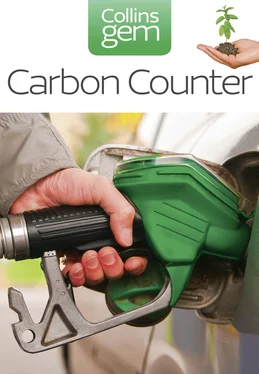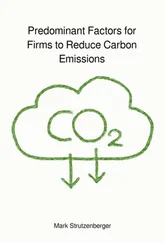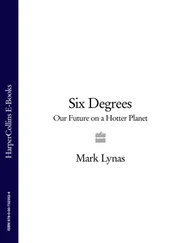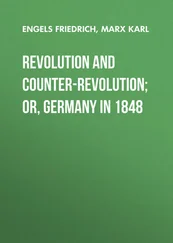Here’s what – if they happen – each of these degree rises in temperature might mean for the planet and our society:
Deserts invade the High Plains of the United States, in a much worse repeat of the 1930s dustbowl. While the epicentre is Nebraska, states from Ontario in the north to Texas in the south suffer severe agricultural losses.
Mount Kilimanjaro loses all its ice.
The Gulf Stream switches off – perhaps plunging Britain and Europe into icy winter cold.
Rare species, like forest-dwelling frogs, possums and tree kangaroos, are wiped out in the Queensland rainforest, Australia, as warming erodes their habitat.
Coral reefs around the world suffer increasing losses from bleaching and are wiped out, with the Great Barrier Reef largely destroyed by 2030.
Island nations submerge under the rising seas.
Oceans turn increasingly acidic, further hitting coral reefs and endangering the marine ecosystem.
One summer in two has heatwaves as strong as 2003’s disaster in Europe.
The Gulf Stream is one part of a massive interlinked conveyor belt of currents that takes heat around the global oceans. Consider that London lies further north than Vancouver in Canada, while northern Scotland is at the same latitude as southern Alaska – but in both cases Europe has a much milder climate, thanks to the warm ocean currents we enjoy.
This current loses its heat in the North Atlantic and Arctic Oceans, and the water sinks to the bottom of the ocean bed. This happens because colder water is more dense and salty, and therefore heavier, driving the movement of the ‘conveyor’. The fear is that global warming will lead to a fresher ocean surface in these sinking regions due to higher rainfall and melting ice, shutting off the crucial driving point of the ocean conveyor. Indeed, a slowing of the current has already been detected by scientists.
However, there is disagreement in the scientific community as to whether this slowing is just a blip or something more permanent. Most computer models do not suggest that the shutting down of the ocean circulation would lead to a new ice age in Europe, although our weather might still change dramatically. So the flash-freezing scenario played out in the movie The Day After Tomorrow is likely to remain fiction.
Greenland tips into irreversible melt, accelerating sea-level rise and threatening coastal cities around the world.
Polar bears, walruses and other ice-dependent marine mammals become extinct in the Arctic as the icecap disappears.
Drought, fire and searing heat strike the Mediterranean basin.
Declining snowfields threaten water supplies in California.
A third of species worldwide face extinction as the climate changes.
The Kalahari Desert spreads across Botswana, engulfing the capital in sand dunes, and driving millions of refugees out to surrounding countries.
A permanent El Niño (see tip, right) grips the Pacific, causing weather chaos around the world, and drought in the Amazon.
Water runs short in Perth, Sydney and other parts of Australia away from the far north and south.
Agriculture shifts into the far north – Norway’s growing season becomes like southern England is today. But with declines in the tropics and subtropics due to heat and drought, the world tips into net food deficit.
The whole Amazonian ecosystem collapses in a conflagration of fire and destruction – desert and savannah eventually take over where the world’s largest rainforest once stood. Huge amounts of carbon pour into the atmosphere, adding another degree to global warming.
Hurricanes strike the tropics that are half a category stronger than today’s, with higher wind speeds and rainfall. Wind speeds in the strongest storms could rise to 200 miles per hour.
The Indus River runs dry due to glacial retreat in the Himalayas, forcing millions of refugees to flee Pakistan. Possible nuclear conflict with India over water supplies.
Most of the Nile Delta is threatened by rising seas, as is a third of Bangladesh. Tens of millions more become climate refugees.
West Antarctic ice sheet potentially collapses, pumping five metres of water into global sea levels.
Tip: El Niño is the name given to a reversal of currents in the east Pacific Ocean, which brings warm water to the coast of Peru, sparking rainfall in areas that are normally desert. In contrast, the lush forests of Papua New Guinea, where the rain usually falls, bake in drought. El Niño, in fact, changes weather across the globe.
Southern Europe becomes like the Sahara, with deserts spreading in Spain and Portugal. People move north into temperate refuges in Scandinavia and the British Isles, which become increasingly overcrowded, resulting in further conflict.
All glaciers disappear from the Alps, further reducing water supplies in central Europe.
Permafrost melt in Siberia releases billions of tonnes of methane and carbon dioxide, meaning that global warming spirals upward.
Earth hotter than at any time for 55 million years.
Desert belts expand from the subtropics into temperate regions. Civilization collapses as humanity is unable to cope.
Methane hydrate is released from underneath the oceans, sparking tsunamis in coastal regions and pushing global warming into an unstoppable spiral.
Much of the world is uninhabitable.
Mass extinction scenario: the end-Permian mass extinction 251 million years ago was associated with six degrees of warming, and wiped out 90% of life on earth. No one is sure what happened, but a combination of volcanic CO2 releases and methane hydrates may have been the cause. (This was much worse than the end-Cretaceous mass extinction, 65 million years ago, which wiped out the dinosaurs.)
Huge firestorms sweep the planet as methane hydrate fireballs ignite.
Seas turn anoxic (without oxygen) and release poisonous hydrogen sulphide.
Humanity’s very survival as a species is in question.
( Note : this list is a very potted summary of a book called Six Degrees , also by Mark Lynas, published in March 2007 by Fourth Estate.)
If none of this sounds very appealing, then you’re reading the right book. This guide aims to show how you can help to avoid these disasters by reducing your personal contribution to global warming. The table on page 29 indicates the changes that are needed on a global scale to avoid each successive degree of global warming.
You might have noticed from the discussion above that there are certain ‘tipping points’, after which global warming could become unstoppable. Several of these could be reached if temperatures cross the two degrees threshold, because at this level of warming, greenhouse gas releases from the soils and forests could take on their own unstoppable momentum. That would leave humanity powerless to intervene as our planet began cooking. For this reason, many environmental groups and even governments (including the European Union) have begun to fix on the target of two degrees as a danger level that must not be crossed.
The graph on pages 20-1 shows how high temperatures might rise, in comparison to their levels over the last millennium. Note that the two degrees danger line is well below most of the scenarios for temperature change by 2100.
Staying below two degrees with any level of certainty would require global greenhouse gas emissions to peak by 2015 – quite a tall order, especially given the reluctance of many people and nations to face up to the scale and urgency of the problem. However, even if we overshoot this target, any cuts we do make will still help to slow the rate of change. At the very least, this gives human societies and natural species more time to adapt to rising sea levels, harsher weather and shifting climate zones. So it’s not too late to act, but time is rapidly running out, and the era of procrastination is definitely over.
Читать дальше

![Carbon - Девушка с Косой [СИ]](/books/427728/carbon-devushka-s-kosoj-si-thumb.webp)










